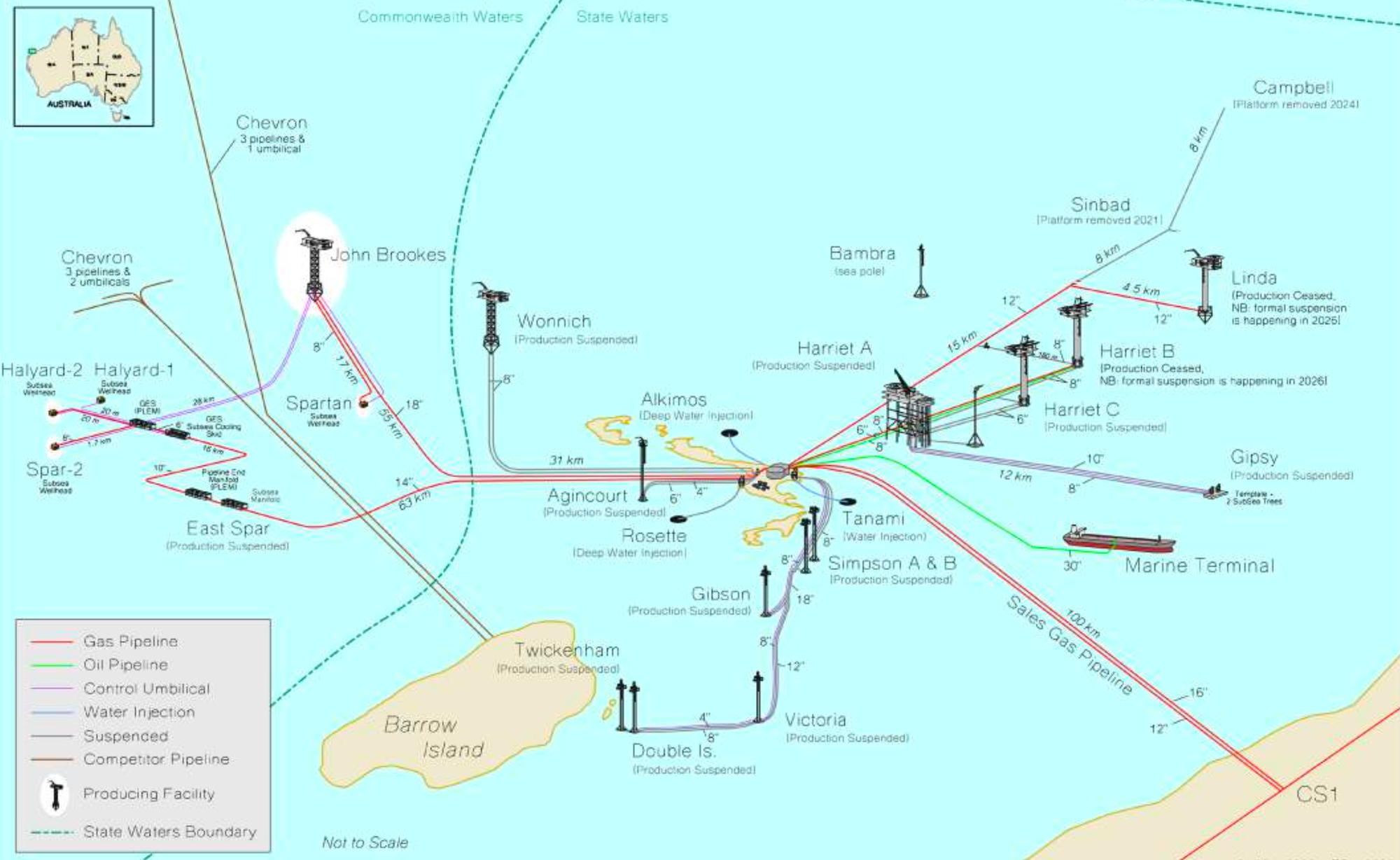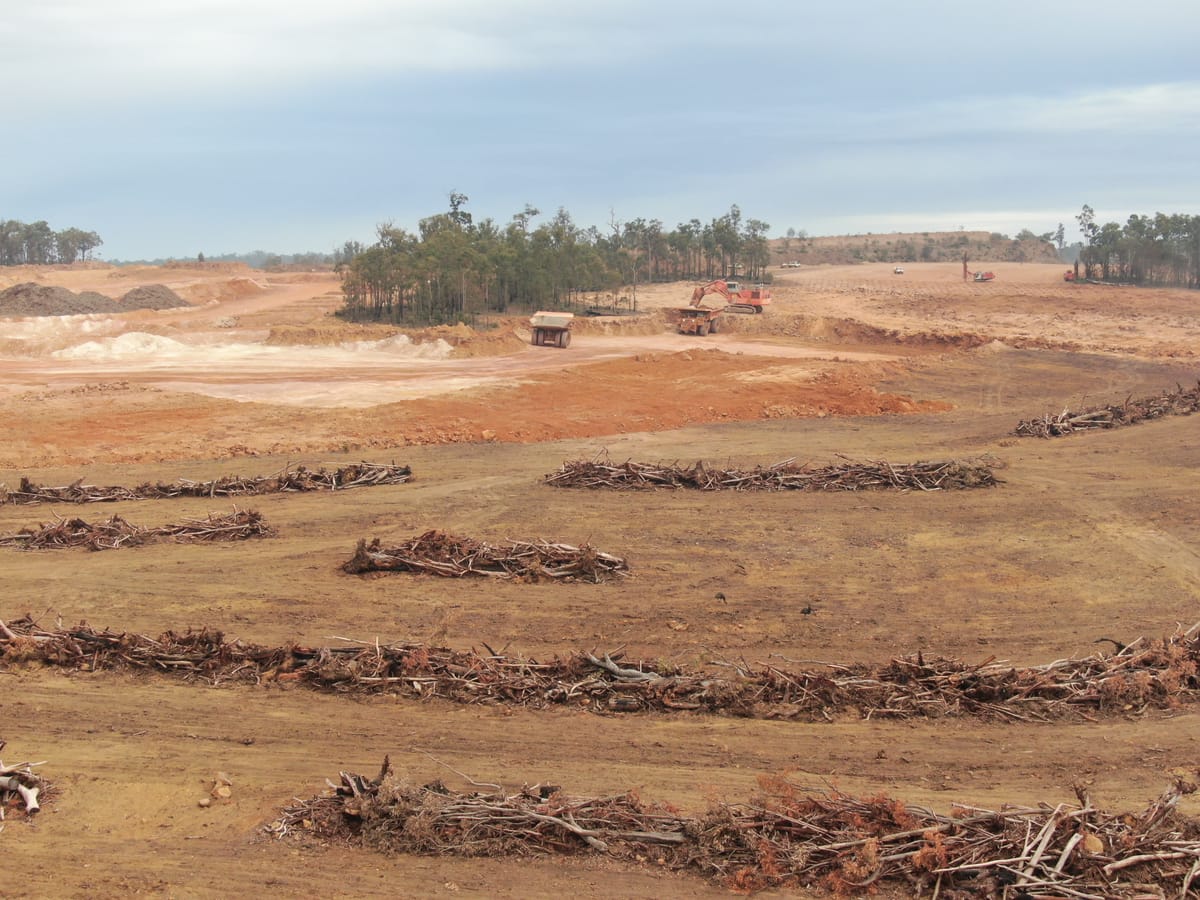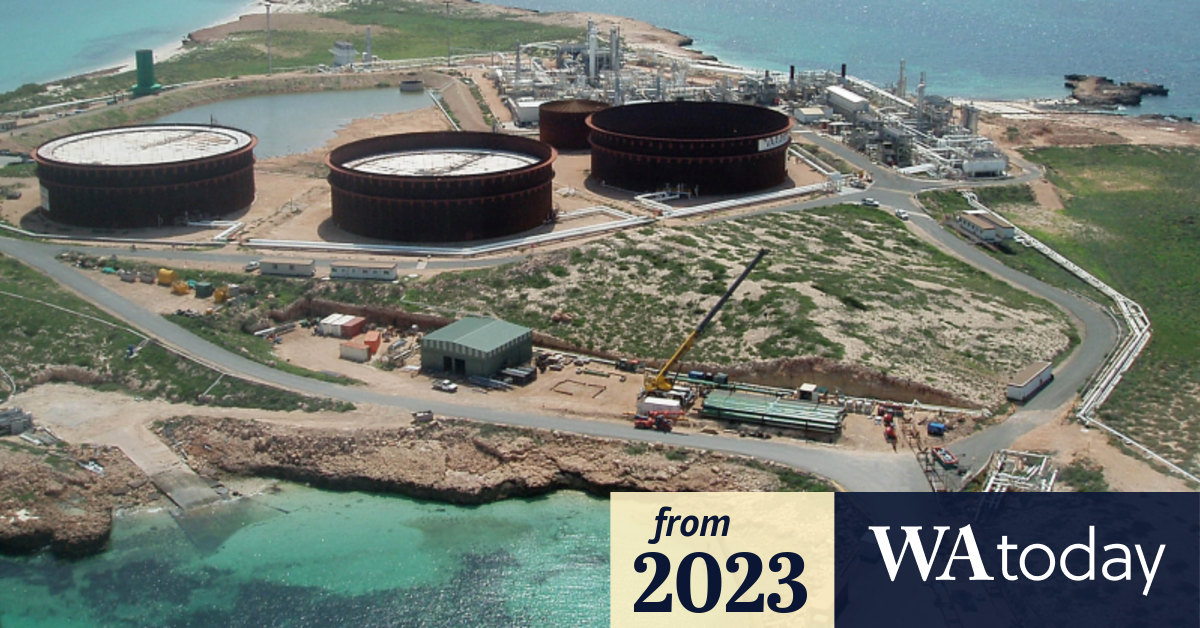Mines Department blasts holes in Alcoa’s jarrah forest care claims
Endangered cockatoos - 105,000 exploration holes a year - insecure offsets: WA’s mining regulator has questions for the US miner.
The company is monitoring the leaks that add to its problems at the ageing facilities.

Gas is seeping from at least 13 locations on the seabed near Santos facilities around Varanus Island off the Pilbara coast, but the $25 billion company is not answering questions.
The problem was revealed in a consultation fact sheet released by Santos in recent months, which stated, "There are 13 known gas seepages which are subject to a gas monitoring program."

WA's Department of Mines, Petroleum and Exploration (DMPE) is aware of the bubbles detected by Santos in the coastal waters surrounding Varanus Island following decommissioning activities.
A DMPE spokesman said Santos had observed bubbles coming from well locations and the seabed.
He said Santos had developed a program for monitoring the gas seeps, which the regulator understood included the rate of gas escaping, checking the integrity of the wells and considering ways to manage the problem.
"Santos has not yet submitted the results of the monitoring program to the department," he said.
Boiling Cold asked Santos four days ago how long it had been aware of the seeps, how long it had been monitoring them, was the rate of seepage increasing, and how many wells in WA waters it still had to plug and abandon?
No response was received.
Santos is preparing a new environment plan for managing its operations in State waters around Varanus Island. The current environment plan accepted by the regulator in late 2024 makes no mention of gas seeps.
For over a decade, gas has leaked from wells at Santos' shuttered Legrendre field 10km north of Dampier.
Two weeks ago, Boiling Cold revealed gas was seeping to the surface on Barrow Island near oil facilities that closed in May, which Chevron operates and Santos has an interest in.
Wilderness Society fossil fuel campaigner Fern Cadman said three cases of gas escaping from the ground in the same region pointed to systemic failures in the oversight of oil and gas production in Australia.
She said the area included habitats for humpback whales, turtles and dugongs and was near the Ningaloo World Heritage-listed marine park.
"Our oil and gas regulators need to undertake a comprehensive investigation of oil and gas infrastructure across the country to determine the full extent of our leaky gas problem.”

All three seepage locations are where old facilities are being decommissioned. The problems add to a trend of bad news and rising costs for the industry as more fields near the end of production.
On Wednesday, Woodside announced that its decommisioning of three oil fields it bought from BHP - Stybarrow and Griffin in WA and Minerva in Victoria - had been "impacted by unexpected challenges, with further engineering and alternative solutions required."
The company said BHP had left some of the facilities in a state that "continued to present challenges for safe and efficient execution." It now estimates the cost to decommission the three fields to be up to $US500 million ($760 million) more expensive than it had allowed for.

The gas seeps add to the sorry record of Santos' operations near Varanus Island in recent years.
Santos' current environmental plan recognises a leak from a loading hose 100 times the volume of the dolphin incident as a "credible" risk.
All the info and a bit of comment on WA energy, industry and climate every Friday